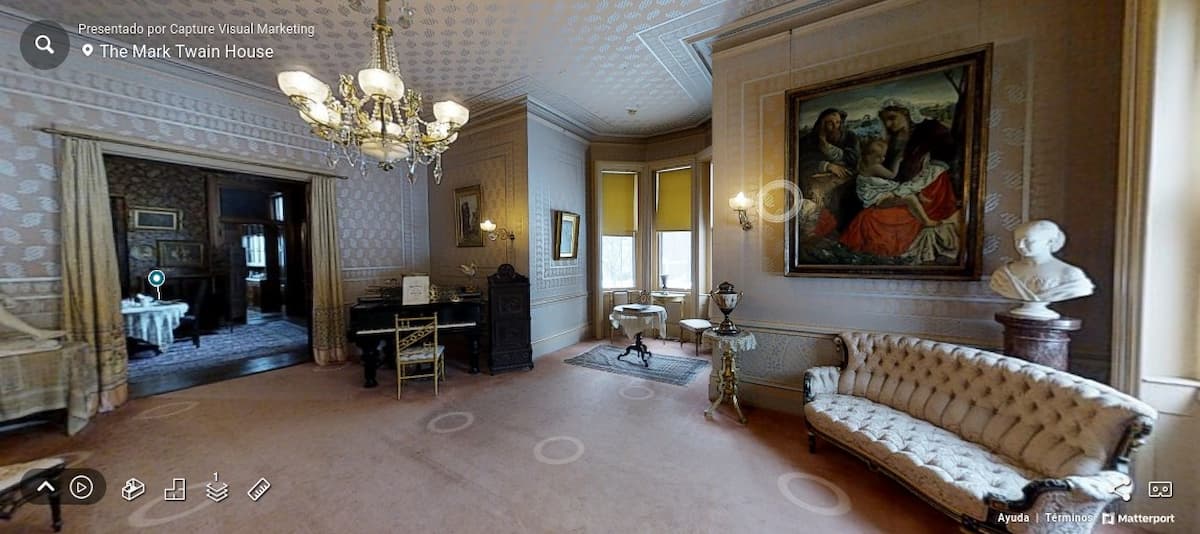WikiSpaces 3D: a hundred places to visit in virtual reality

360° cameras allow captures in multiple planes, allowing the virtual reconstruction of certain spaces. It is a resource that is widely used today, with Google Street View and many real estate portals as examples.
WikiSpaces 3D is a web platform that groups around a hundred virtual visits, also compatible with VR glasses, to explore different spaces, such as Mark Twain’s house that appears in the attached image.
A large gallery of interactive and three-dimensional virtual tours
The WikiSpaces 3D collection is presented with the intention of “allowing people to virtually visit places they might not otherwise be able to go, by providing a collection of interesting places (…) explorable in virtual reality”.
In this gallery it is possible to find a very varied selection of places to visit: from the interior of a Boeing 747, to the privileged view of a yacht sailing; from the Abu Simbel Temple in Egypt, to a traditional Maori village in New Zealand; and even from a Lamborghini store, to the Living Museum of Computing.
When using this site from a desktop browser, those who managed to use the Encarta Encyclopedia at the time will surely find in this gallery a space similar to the “virtual visits” offered by that software, since navigation is carried out in a similar way. .
Whether by clicking on the area you want to visit, clicking on the map or the guide of outstanding places, and even following the automated tour offered by the platform, it is possible to go through the places presented in a fairly complete way. There is also the option of using virtual reality (VR) glasses, indicating as a recommendation the use of Oculus Quest 2 or, failing that, Oculus Go, but with a limited experience.
Although the navigation on these spaces is through a three-dimensional reconstruction of them, all of them are presented through photographs and not any other kind of illustration.
The selection of spaces that can be found in WikiSpaces 3D corresponds to content contributed by its community, keeping a space open to receive more contributions. Without going too far, each space presented, in addition to having a pertinent review of the context, also accredits the creation of the material to its respective authors.




